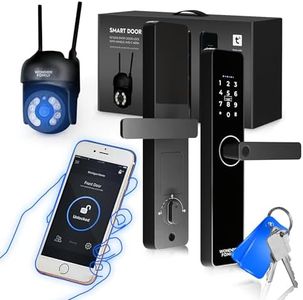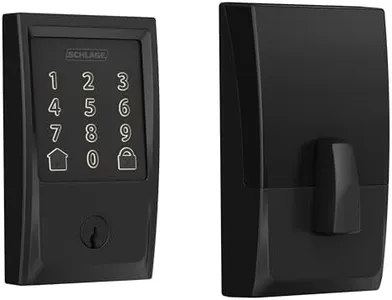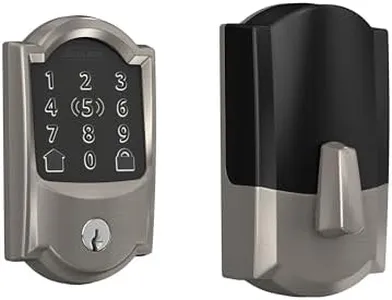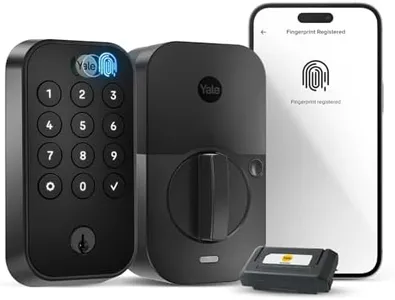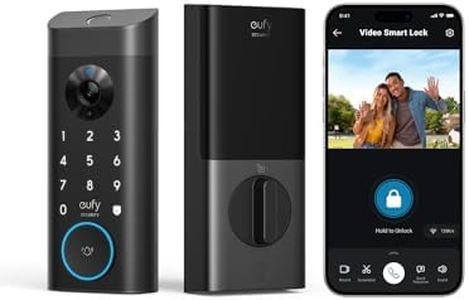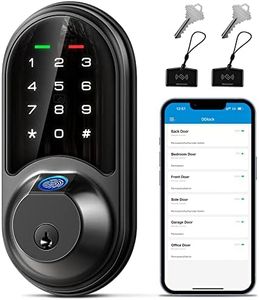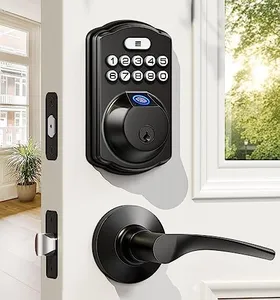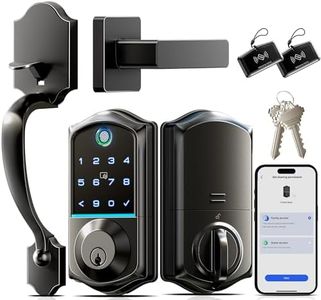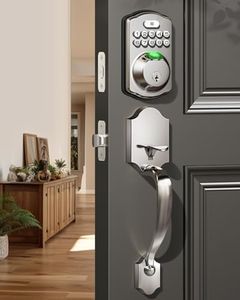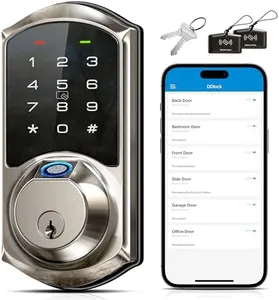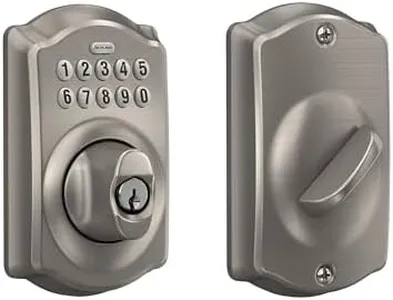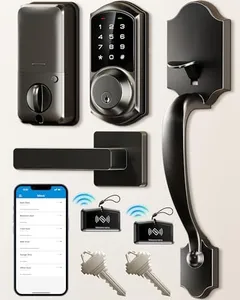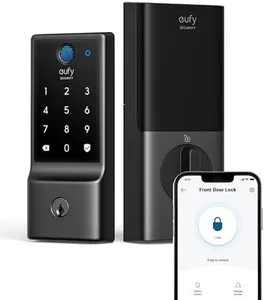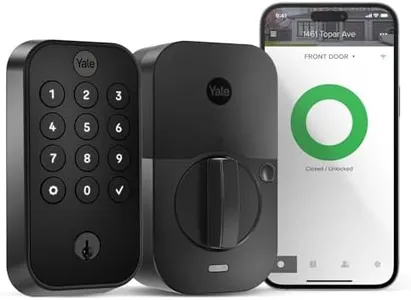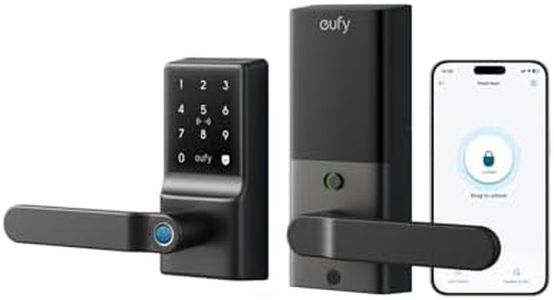10 Best Smart Locks 2025 in the United States
Our technology thoroughly searches through the online shopping world, reviewing hundreds of sites. We then process and analyze this information, updating in real-time to bring you the latest top-rated products. This way, you always get the best and most current options available.

Our Top Picks
Winner
Schlage Encode Smart Wi-Fi Deadbolt with Century Trim in Matte Black
Most important from
15178 reviews
The Schlage Encode Smart Wi-Fi Deadbolt with Century Trim in Matte Black offers a range of features that make it a robust option for enhancing home security. One of its biggest strengths is the built-in Wi-Fi, which eliminates the need for additional hubs, making it easier to set up and use. The keypad lock type is user-friendly and allows for keyless entry, which is convenient and increases security. It also supports voice control through Google Assistant and Amazon Alexa, offering flexibility in how you secure your home. The lock is powered by four AA alkaline batteries, which are included, making it ready to use right out of the box.
Compatibility with various smart home systems (Vera, Google Assistant, Amazon Alexa) adds to its appeal, but the lack of compatibility with Apple HomeKit might be a drawback for Apple users. Security features are solid, with the physical keypad providing a secure method of entry, and the sleek zinc construction adding durability. The installation process is relatively straightforward, with all necessary hardware included, although some users may find measuring their door's backset, cross bore, and thickness to ensure a proper fit a bit tedious.
User management is efficient, allowing multiple codes to be set for different users, which is great for families or small offices. In terms of design, the matte black finish is stylish and modern, fitting well with various home aesthetics. In summary, this smart lock is an excellent choice for users looking for a reliable and easy-to-install smart lock, although potential buyers should consider the battery maintenance requirement and ensure compatibility with their smart home system.
Most important from
15178 reviews
Schlage BE499WB CAM 619 Encode Plus WiFi Deadbolt Smart Lock, Keyless Entry Touchscreen Door Lock with Camelot Trim, Satin Nickel
Most important from
1501 reviews
The Schlage BE499WB CAM 619 Encode Plus WiFi Deadbolt Smart Lock is designed to offer convenience and security for homeowners looking for a smart locking solution. One of its standout features is the built-in WiFi, which allows for remote access through the Schlage Home app. This means you can lock and unlock your door from anywhere, manage up to 100 access codes, and even receive notifications about lock activity. For families or shared spaces, the ability to customize access codes is particularly beneficial.
The lock also integrates with Apple HomeKit, Amazon Alexa, and Google Assistant, enabling voice control for an effortless hands-free experience. The advanced security features, including a customizable alarm for unauthorized entry and a fingerprint-resistant touchscreen, provide additional peace of mind.
Installation is straightforward, requiring only a screwdriver, which is a big plus for those who may not be handy. The auto-lock feature enhances security by automatically locking the door after a set period, and the one-touch locking from the exterior makes it easy to secure your home on the go. However, the reliance on WiFi means that if your internet goes down, you might face difficulties locking or unlocking your door remotely. Additionally, while the touch screen is convenient, it may not be as reliable in extreme weather conditions and could wear over time.
Most important from
1501 reviews
Yale Assure Lock 2 Touch Deadbolt, Black Suede Keyed Smart Entry Door Lock with Wi-Fi Connected Touch Keypad and Fingerprint Scanner for Code Entry and Remote Access, YRD410-F-WF1-BSP
Most important from
53 reviews
The Yale Assure Lock 2 Touch Deadbolt is a versatile smart lock designed for modern homeowners. It excels in connectivity, featuring both Bluetooth and Wi-Fi, allowing you to control the lock remotely via the Yale Access app. This convenience is further enhanced by its compatibility with major smart home systems like Apple HomeKit, Google Assistant, and Amazon Alexa. The lock offers a range of access methods including a touch keypad, fingerprint scanner, and traditional key, ensuring flexibility and ease of use.
With 99% accuracy and less than 0.5 seconds recognition time, the fingerprint scanner provides a quick and secure way to unlock your door. The auto-lock feature adds an extra layer of security by ensuring the door is always locked when you leave. Installation is straightforward, requiring only a screwdriver and no professional skills, making it accessible for most users. The lock is powered by 4 AA batteries, which are included, and features a battery indicator to alert you when it’s time to replace them.
Though robust in terms of security and convenience, it might feel a bit bulky with dimensions of 0.9 x 2.5 x 4.9 inches and a weight of 4.18 pounds. The Yale Assure Lock 2 Touch is particularly recommended for those who prioritize multiple access methods and remote control features in a smart lock.
Most important from
53 reviews
Buying Guide for the Best Smart Locks
Smart locks are a great way to enhance the security and convenience of your home. They allow you to lock and unlock your door using a smartphone, keypad, or even voice commands, eliminating the need for traditional keys. When choosing a smart lock, it's important to consider various features and specifications to ensure you select the best one for your needs. Here are some key specs to look at and how to navigate them.FAQ
Most Popular Categories Right Now
